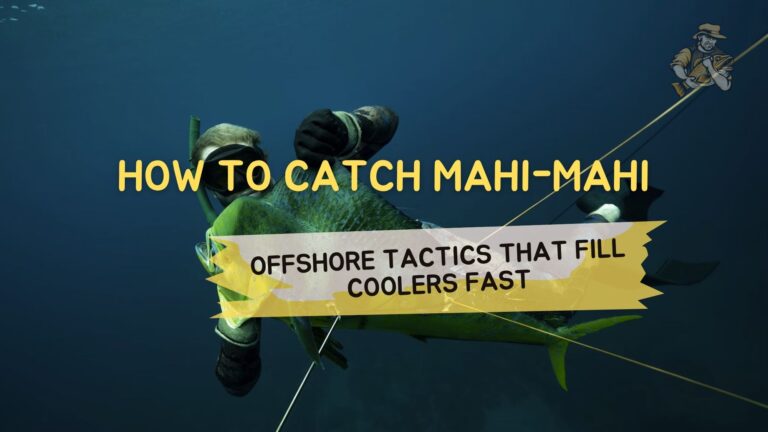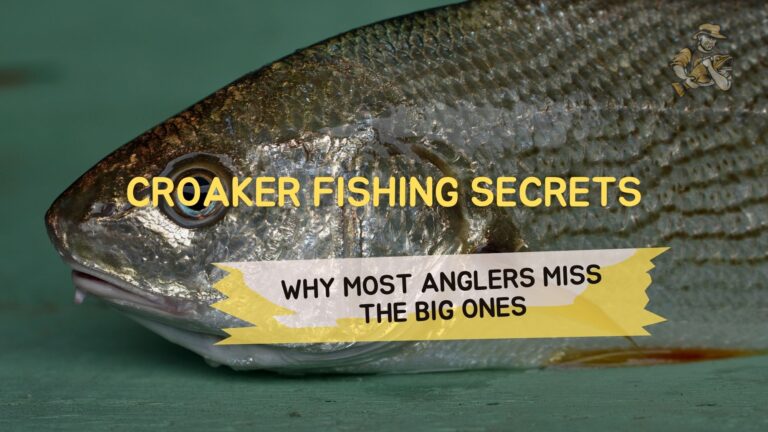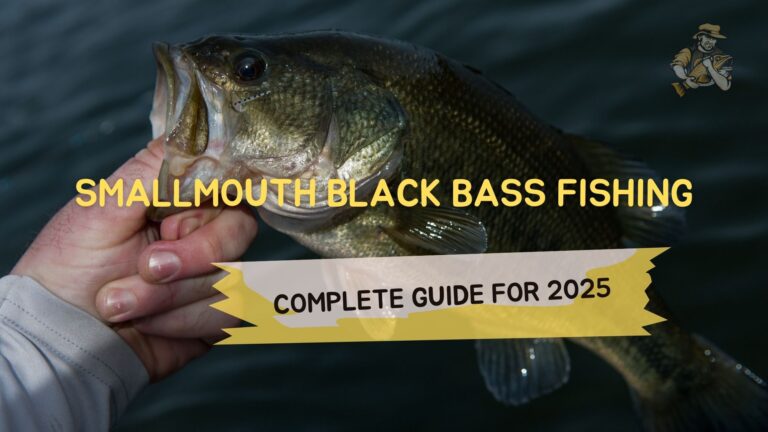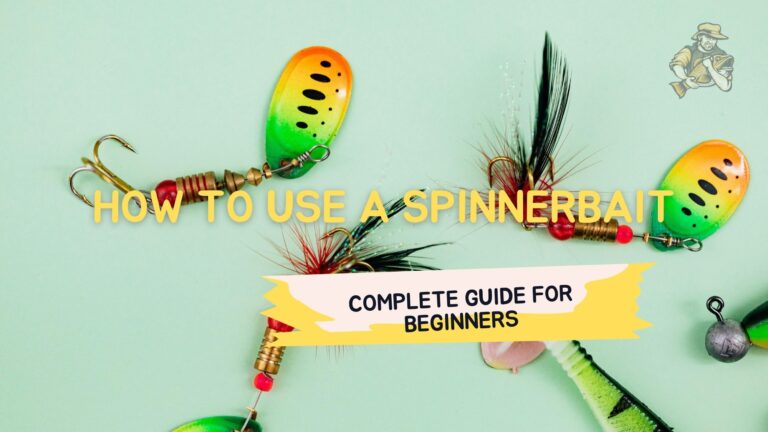Colorful Tetra Fish Types Every Aquarium Owner Should Know
By Adam Hawthorne | Last Modified: April 26, 2025

When I set up my first freshwater aquarium years ago, tetras quickly became my go-to fish. These colorful little swimmers add life and movement to any tank, and their schooling behavior creates a mesmerizing display that’s hard to beat. Over my decades of fishing and keeping aquariums, I’ve come to appreciate how tetras combine stunning colors with relatively easy care requirements.
In this guide, I’ll walk you through the most popular tetra fish types, share some personal experiences, and help you decide which might work best in your home aquarium. Whether you’re just starting out or looking to add some variety to your existing tank, tetras offer something for everyone.
Tetra Fish Types That Will Transform Your Aquarium
Tetras belong to the Characidae family and typically come from the warm, soft waters of South America and Africa. What makes these fish so popular among hobbyists is their stunning variety – from the classic neon glow to striking black and white patterns.
I’ve kept several species in my home tanks over the years, and each brings its own character to the aquarium. Most tetras are peaceful community fish that prefer to live in schools of 6 or more, which creates that beautiful synchronized swimming effect that’s so captivating to watch.
Before we dive into specific types, remember that most tetras share some common care requirements:
- Tank size: Generally 10+ gallons, larger for bigger schools
- Water temperature: 74-80°F (23-27°C)
- pH: Slightly acidic to neutral (6.0-7.5)
- Diet: Omnivorous, accepting quality flake food, frozen foods, and occasional live treats
Now, let’s explore some of the most popular and visually striking tetras available.
1. Neon Tetra
The iconic neon tetra might be the fish that comes to mind when most people think of freshwater aquariums. Their electric blue and red stripes seem to glow against planted tank backgrounds.
I still remember bringing home my first school of neons. Despite having fished in waters across North America, I was mesmerized by these tiny creatures from the Amazon. Their iridescent blue stripe runs from nose to adipose fin, while a vibrant red stripe covers the rear half of the body.
Quick Facts:
- Scientific name: Paracheirodon innesi
- Size: 1-1.5 inches (2.5-4 cm)
- Lifespan: 5-8 years with proper care
- Temperament: Peaceful, can be shy without adequate cover
- Minimum school size: 6, but 10+ is better
Neons are relatively hardy once acclimated but can be sensitive during the transition to a new tank. I’ve found they do best in well-established aquariums with stable parameters. They appreciate planted tanks with some floating plants to diffuse bright light.
According to research from the Amazon Research Institute, wild neon tetras inhabit blackwater streams with tannin-stained water, explaining their preference for slightly dimmer lighting.
2. Cardinal Tetra
Often confused with neon tetras, cardinal tetras sport a similar electric blue stripe, but their red coloration extends the full length of their body, making them even more striking.
During a fishing trip to Florida a few years back, I struck up a conversation with a local aquarium shop owner who considered cardinals the “superior neon.” After adding a school to my home tank, I tend to agree – they’re slightly larger, often more vibrant, and in my experience, a bit hardier once established.
Quick Facts:
- Scientific name: Paracheirodon axelrodi
- Size: 1.5-2 inches (3.8-5 cm)
- Lifespan: 4-5 years
- Temperament: Peaceful, active swimmers
- Minimum school size: 6-8
Cardinals typically come from warmer waters than neons and appreciate temperatures around 78-80°F. They’re not the best choice for cycling a new tank but thrive in mature aquariums with stable parameters.
Research published in the Journal of Fish Biology shows that cardinal tetras have adapted to very specific water chemistry in the wild, which explains why they sometimes struggle in tanks with fluctuating conditions.
3. Black Neon Tetra
Despite the name, black neons aren’t closely related to true neons. These elegant fish feature a black horizontal stripe running the length of their silvery body, accented by a shimmering white stripe above it.
I added a school of black neons to my 40-gallon community tank last spring when the local fish store had a special on them. What surprised me most was how different their personality seemed from regular neons – they were bolder, more active in open water, and less likely to hide even when I approached the tank.
Quick Facts:
- Scientific name: Hyphessobrycon herbertaxelrodi
- Size: 1.5 inches (3.8 cm)
- Lifespan: 5 years average
- Temperament: Peaceful but more outgoing than standard neons
- Minimum school size: 6, but 8-12 creates a better display
Black neons are notably hardier than their colorful cousins. They tolerate a wider range of water parameters, making them excellent fish for beginners or those with less stable tanks. They still prefer soft, slightly acidic water but can adapt to neutral conditions without issue.
The Tropical Fish Hobbyist Magazine once rated black neons among the top 10 hardy fish for community tanks, which matches my experience completely.
4. Ember Tetra
If you’re looking for a fiery splash of color, ember tetras bring a brilliant orange-red hue that stands out dramatically in planted aquariums. These tiny jewels are perfect for smaller tanks where other tetras might feel cramped.
I first encountered ember tetras at a friend’s nano tank setup in Traverse City. Despite their small size, their vibrant color made them the centerpiece of his 8-gallon planted aquarium. The way they contrasted against the green plants was stunning.
Quick Facts:
- Scientific name: Hyphessobrycon amandae
- Size: 0.8 inches (2 cm)
- Lifespan: 2-4 years
- Temperament: Peaceful, can be slightly shy
- Minimum school size: 8-10 (their small size means you can keep more)
Ember tetras are native to the Araguaia River basin in Brazil, where they inhabit heavily vegetated areas. In the home aquarium, they appreciate plenty of live plants and subdued lighting. Their small size makes them vulnerable to larger fish, so choose tankmates carefully.
According to Seriously Fish, ember tetras show their best coloration when kept in slightly acidic water with tannins from botanicals like Indian almond leaves or alder cones.
5. Rummy Nose Tetra
Named for their distinctive bright red “nose,” rummy nose tetras are prized for both their appearance and their tight schooling behavior. Their bodies feature a striking black and white checkerboard pattern on the tail.
The fishing guides I met during a trip to the Amazon basin called these fish “living water quality monitors” because their red faces fade quickly if water conditions deteriorate. This has proven true in my home aquarium – when I notice my rummies losing some color, it’s usually time for a water change.
Quick Facts:
- Scientific name: Hemigrammus rhodostomus
- Size: 2 inches (5 cm)
- Lifespan: 5-6 years
- Temperament: Peaceful, excellent schoolers
- Minimum school size: 6-8, but larger groups create impressive displays
Though slightly more demanding than some other tetras, rummy nose tetras reward the extra care with their stunning appearance and remarkable schooling behavior. They turn in unison, creating living art in your aquarium.
The Aquarium Co-Op, a well-respected fish store based in Washington state, recommends rummy nose tetras as the gold standard for schooling behavior in the home aquarium.
6. Diamond Tetra
Diamond tetras bring elegant sparkle to any community tank with their reflective scales that shimmer like, well, diamonds under aquarium lighting. Their longer, more streamlined body shape also sets them apart from many other tetras.
I added diamond tetras to my display tank about two years ago after spotting them at a specialty fish store during a fishing trip to Wisconsin. Their subtle beauty doesn’t photograph well but is stunning in person – they literally twinkle as they move through the water.
Quick Facts:
- Scientific name: Moenkhausia pittieri
- Size: 2.5 inches (6.4 cm)
- Lifespan: 5-8 years
- Temperament: Peaceful but slightly more active/nippy than some tetras
- Minimum school size: 6-8
Diamond tetras are somewhat larger than many other popular tetras and can handle slightly higher water flow. They’re also more tolerant of neutral to slightly alkaline water, making them suitable for established community tanks with a variety of species.
Research from the University of Florida’s Tropical Aquaculture Laboratory indicates that diamond tetras are among the more adaptable characins, explaining their ability to thrive in a wider range of water conditions than many of their relatives.
7. Congo Tetra
A departure from the South American species, Congo tetras hail from Africa and offer a totally different look. Males develop elaborate finnage and stunning iridescent colors that range from electric blue to copper and gold.
During a particularly cold Michigan winter a few years back, I set up a Congo tetra species tank. These larger, more dramatic tetras quickly became conversation starters whenever friends visited. The males’ constant displays to impress females create a dynamic tank environment.
Quick Facts:
- Scientific name: Phenacogrammus interruptus
- Size: 3-3.5 inches (7.5-9 cm)
- Lifespan: 5 years average
- Temperament: Peaceful but active
- Minimum school size: 6, with more females than males to reduce competition
Congo tetras stand out from their South American cousins not just in appearance but in care requirements. They prefer slightly warmer water (76-82°F) and can adapt to a wider pH range. Their larger size means they need more swimming space – a 30-gallon tank is the minimum for a proper school.
The Association of Zoos and Aquariums lists Congo tetras as excellent showcase fish for demonstrating sexual dimorphism, as males and females look dramatically different when mature.
8. Serpae Tetra
Also known as the jewel tetra, the serpae brings a bold splash of deep crimson red to the aquarium. Their distinctive black marking behind the gill and slightly taller body shape creates an eye-catching profile.
I’ve had a mixed relationship with serpaes over the years. When I first started keeping aquariums, I added a small group to my community tank, only to find they occasionally nipped at the fins of slower-moving tankmates. In a species tank or with other active fish, though, they’re absolutely stunning.
Quick Facts:
- Scientific name: Hyphessobrycon eques
- Size: 1.5-1.75 inches (3.8-4.5 cm)
- Lifespan: 5-7 years
- Temperament: Semi-aggressive, can be fin nippers
- Minimum school size: 5-6
Serpae tetras are more robust than many of their cousins and can handle a wider range of water conditions. They’re active swimmers that bring energy to the middle level of the aquarium. If you’re considering serpaes, make sure to provide plenty of swimming space and avoid keeping them with long-finned species like bettas or angelfish.
According to the American Cichlid Association, serpae tetras can actually make good dither fish for certain dwarf cichlid species, as their active swimming encourages shy cichlids to come out of hiding.
9. Glowlight Tetra
Named for the distinctive orange-red horizontal line that seems to glow against their silvery body, glowlight tetras offer a more subtle beauty compared to their neon cousins.
Trust me when I say photos don’t do these fish justice. In my basement “fishing den” aquarium, I keep a large school of glowlights that create a stunning effect under the tank lights. When I’m tying flies for my next fishing trip, I often find myself distracted by their gentle shimmer.
Quick Facts:
- Scientific name: Hemigrammus erythrozonus
- Size: 1.5 inches (3.8 cm)
- Lifespan: 3-5 years
- Temperament: Very peaceful
- Minimum school size: 6-8
Glowlights are among the hardier tetra species, making them excellent for beginners. They tolerate a wider range of water conditions than neons or cardinals, though they still prefer slightly acidic, soft water. Their peaceful nature makes them compatible with virtually any community tank inhabitants of similar size.
Research from the North American Native Fishes Association indicates that glowlight tetras adapt better to captive breeding programs than many other tetra species, explaining their wide availability in the hobby.
10. Buenos Aires Tetra
These larger, more robust tetras bring a silvery body accented by a bold black marking on the tail and hints of red on their fins. They’re named after the region in Argentina where they were first discovered.
During a fishing trip to Lake Michigan a few summers ago, I met an experienced aquarist who swore by Buenos Aires tetras for mixed community tanks with slightly harder water. Following his advice, I added a school to my 55-gallon, and they’ve proven to be among the most adaptable tetras I’ve kept.
Quick Facts:
- Scientific name: Hyphessobrycon anisitsi
- Size: 2.5-3 inches (6.4-7.6 cm)
- Lifespan: 5 years average
- Temperament: Semi-aggressive, active swimmers
- Minimum school size: 5-6
Buenos Aires tetras are some of the most adaptable members of the family, tolerating a wide range of water parameters including harder water. This makes them suitable for tanks where softer water specialists might struggle. They’re also known for nibbling on plants, so be careful if you have a heavily planted aquarium.
The American Livebearer Association recommends Buenos Aires tetras as compatible tankmates for many livebearers since they share similar water preference for slightly harder, more alkaline conditions than most other tetras.
Setting Up the Ideal Tetra Tank
Creating the perfect environment for tetras isn’t complicated, but there are some key considerations. After keeping various tetra species over the years (in between my fishing adventures), I’ve found a few common elements that help these fish thrive:
- Proper tank size – While some nano species like ember tetras can do well in tanks as small as 10 gallons, most tetras need at least 20 gallons to accommodate a proper school. My best displays have always been in 30+ gallon tanks.
- Established aquarium – Most tetras, especially the more colorful varieties, do best in fully cycled tanks with stable parameters. I learned this lesson the hard way when I tried adding neons to a new setup years ago.
- Plants and hiding spots – Nearly all tetras appreciate having plants (live or artificial) and other decor that provides security. A mix of open swimming areas and sheltered spaces creates the ideal habitat.
- Subdued lighting – Many tetras come from blackwater environments with tannin-stained water that filters sunlight. Slightly dimmer lighting or floating plants can help recreate this natural condition.
- Compatible tankmates – Choose fish that occupy different levels of the tank and have similar temperaments. Good companions include peaceful bottom dwellers like corydoras catfish, dwarf gouramis, or smaller rasboras.
According to the Aquatic Veterinary Association, proper school size is critical for tetra health – insufficient numbers can lead to stress, weakened immune systems, and shortened lifespans.
Feeding Your Tetras
In my experience, tetras aren’t picky eaters, but variety is key to bringing out their best colors and ensuring optimal health. I’ve had great success with a feeding regimen that includes:
- Quality flake or micro pellet food as a daily staple
- Frozen foods like bloodworms, daphnia, or brine shrimp 2-3 times weekly
- Occasional live foods as special treats (mosquito larvae I collect from my rain barrel are a favorite)
I’ve noticed that most tetras are surface to mid-water feeders. During one particularly memorable feeding time, my ember tetras performed what I can only describe as a “feeding dance,” darting up to grab food and then retreating in a synchronized pattern.
Research from Ohio State University’s Aquatic Ecology Laboratory suggests that varied diets significantly impact both coloration and breeding success in characin species like tetras.
Common Health Issues in Tetras
While generally hardy, tetras can experience health problems. Here are some I’ve encountered over my years of keeping these fish:
Neon Tetra Disease (NTD) – Despite the name, this parasitic condition can affect many tetra species. It causes color loss, unusual swimming, and eventually death. There’s no known cure, so prevention through quarantine of new fish is essential.
Ich (White Spot Disease) – Appears as white salt-like spots on the body and fins. Treatable if caught early with medication and increased tank temperature.
Fin Rot – Usually caused by poor water quality, leading to deterioration of the fins. Regular water changes and improved maintenance typically resolve this issue.
The American Fish Veterinary Society recommends quarantining all new tetras for at least two weeks before adding them to an established community tank to prevent disease transmission.
FAQ: Tetra Fish Types and Care
Are tetras good for beginners?
Some tetras make excellent beginner fish, while others require more experience. In my years of helping friends set up their first tanks, I usually recommend black neons, glowlights, or pristella tetras for novice aquarists. These species are more forgiving of small maintenance mistakes and fluctuating water parameters.
How many tetras should be kept together?
Tetras are schooling fish that need groups to feel secure and display natural behaviors. I never recommend keeping fewer than 6 of any tetra species, but larger schools of 10-12 create more impressive displays and help the fish feel more secure. My personal rule is: the smaller the species, the larger the school should be.
Can different tetra species be kept together?
Absolutely! Some of my most beautiful tanks have featured multiple tetra species. Just be aware that they typically won’t school together – each species will form its own group. I’ve had great success keeping black neons, glowlights, and pristella tetras together in the same community tank.
Why are my neon tetras losing color?
This is a common question I encountered when I used to volunteer at my local fish store. Color loss in neons can result from stress, poor water quality, improper diet, or illness. According to the Association of Aquatic Veterinary Medical Professionals, the most common cause is water parameters that don’t match their natural habitat – soft, slightly acidic water with minimal nitrates.
Do tetras need a heater?
Yes, most tetras are tropical fish requiring water temperatures between 74-80°F (23-27°C). Even in my Michigan home where I keep the house warm, aquarium temperatures can fluctuate too much without a reliable heater. I always recommend a good quality heater with a thermostat for any tetra tank.
What makes a good tankmate for tetras?
I’ve had success keeping tetras with peaceful community fish of similar size. Some compatible tankmates include:
- Corydoras catfish
- Dwarf gouramis
- Smaller peaceful rasboras
- Kuhli loaches
- Small peaceful plecos like clown plecos
Avoid aggressive species or large fish that might view tetras as snacks.
Conclusion: Finding Your Perfect Tetra Mix
After keeping dozens of different tetras over my years as both an angler and aquarium enthusiast, I’ve found that these colorful little fish offer something for nearly every freshwater aquarist. Whether you’re drawn to the electric blues of neons, the fiery orange of embers, or the elegant shimmer of diamonds, there’s likely a tetra that will thrive in your setup.
My best advice is to research the specific requirements of any species you’re interested in, ensure your tank is fully cycled, and always purchase the healthiest specimens you can find. Take time to observe their behavior at the store – active, well-colored fish in clean tanks are usually your best bet.
Remember that creating a proper environment with clean water, appropriate tankmates, and good nutrition will reward you with vibrant colors and natural behaviors that make tetras some of the most beloved aquarium fish worldwide.
What’s your experience with keeping tetras? Do you have a favorite species that I didn’t cover here? I’d love to hear about your aquarium adventures in the comments below.

Meet Adam Hawthorne
I’m a lifelong fishing enthusiast who’s spent years exploring rivers, lakes, and oceans with a rod in hand. At Fishing Titan, I share hands-on tips, honest gear reviews, and everything I’ve learned about fish and ocean life, so you can fish smarter and enjoy every cast.
Share:

Meet Adam Hawthorne
I’m a lifelong fishing enthusiast who’s spent years exploring rivers, lakes, and oceans with a rod in hand. At Fishing Titan, I share hands-on tips, honest gear reviews, and everything I’ve learned about fish and ocean life, so you can fish smarter and enjoy every cast.
Related Articles

How to Catch Mahi-Mahi: Offshore Tactics That Fill Coolers Fast
I still remember my first encounter with mahi-mahi (also called dolphin fish or dorado). We were about 20 miles offshore from Key West on a…

Croaker Fishing Secrets: Why Most Anglers Miss the Big Ones
Croaker fishing might seem straightforward, but there’s more to catching these tasty fighters than most weekend anglers realize. I’ve spent countless dawns chasing these silver-sided…

Smallmouth Black Bass Fishing: Complete Guide for 2025
If you’ve ever felt that sudden, powerful tug on your line followed by an acrobatic jump that leaves your heart racing, chances are you’ve hooked…

How to Use a Spinnerbait: Complete Guide for Beginners
In my three decades of fishing experience, I’ve found few lures as versatile and effective as the humble spinnerbait. This oddly-shaped lure might look confusing…
